Varun Kumar Ojha
Machine learning approaches to understand the influence of urban environments on human's physiological response
Dec 10, 2018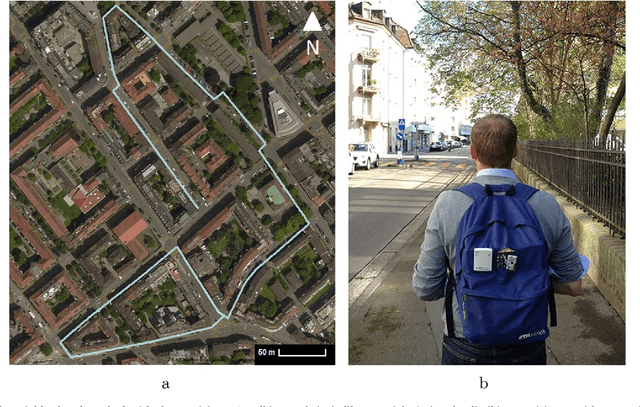

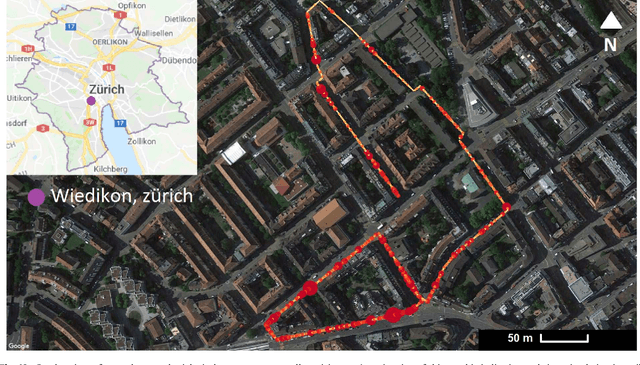
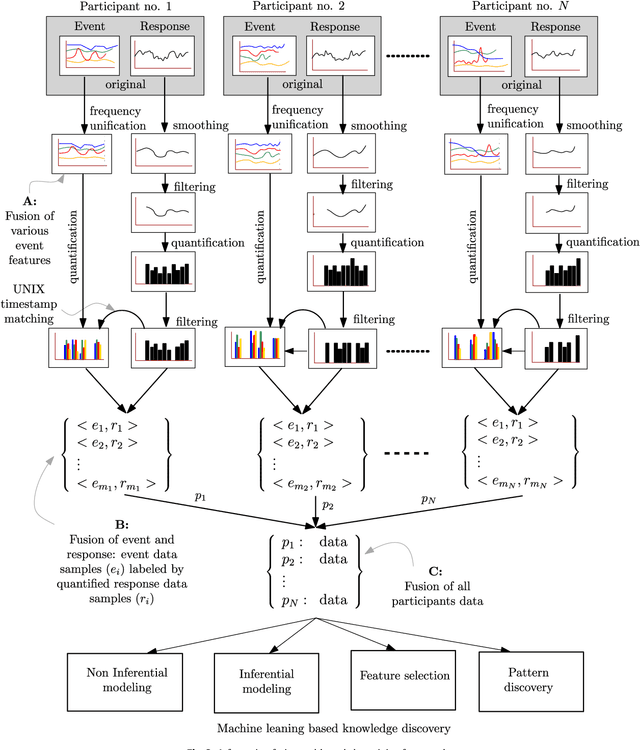
Abstract:This research proposes a framework for signal processing and information fusion of spatial-temporal multi-sensor data pertaining to understanding patterns of humans physiological changes in an urban environment. The framework includes signal frequency unification, signal pairing, signal filtering, signal quantification, and data labeling. Furthermore, this paper contributes to human-environment interaction research, where a field study to understand the influence of environmental features such as varying sound level, illuminance, field-of-view, or environmental conditions on humans' perception was proposed. In the study, participants of various demographic backgrounds walked through an urban environment in Zurich, Switzerland while wearing physiological and environmental sensors. Apart from signal processing, four machine learning techniques, classification, fuzzy rule-based inference, feature selection, and clustering, were applied to discover relevant patterns and relationship between the participants' physiological responses and environmental conditions. The predictive models with high accuracies indicate that the change in the field-of-view corresponds to increased participant arousal. Among all features, the participants' physiological responses were primarily affected by the change in environmental conditions and field-of-view.
Convergence Analysis of Backpropagation Algorithm for Designing an Intelligent System for Sensing Manhole Gases
Jul 06, 2017



Abstract:Human fatalities are reported due to the excessive proportional presence of hazardous gas components in the manhole, such as Hydrogen Sulfide, Ammonia, Methane, Carbon Dioxide, Nitrogen Oxide, Carbon Monoxide, etc. Hence, predetermination of these gases is imperative. A neural network (NN) based intelligent sensory system is proposed for the avoidance of such fatalities. Backpropagation (BP) was applied for the supervised training of the neural network. A Gas sensor array consists of many sensor elements was employed for the sensing manhole gases. Sensors in the sensor array are responsible for sensing their target gas components only. Therefore, the presence of multiple gases results in cross sensitivity. The cross sensitivity is a crucial issue to this problem and it is viewed as pattern recognition and noise reduction problem. Various performance parameters and complexity of the problem influences NN training. In present chapter the performance of BP algorithm on such a real life application problem was comprehensively studied, compared and contrasted with the several other hybrid intelligent approaches both, in theoretical and in the statistical sense.
ACO for Continuous Function Optimization: A Performance Analysis
Jul 06, 2017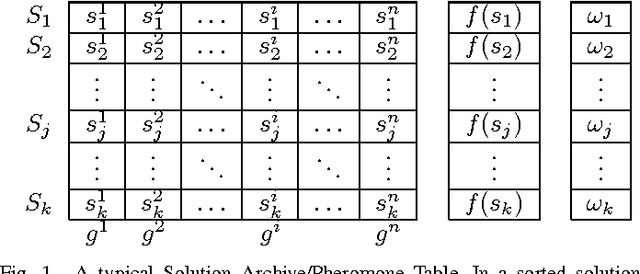
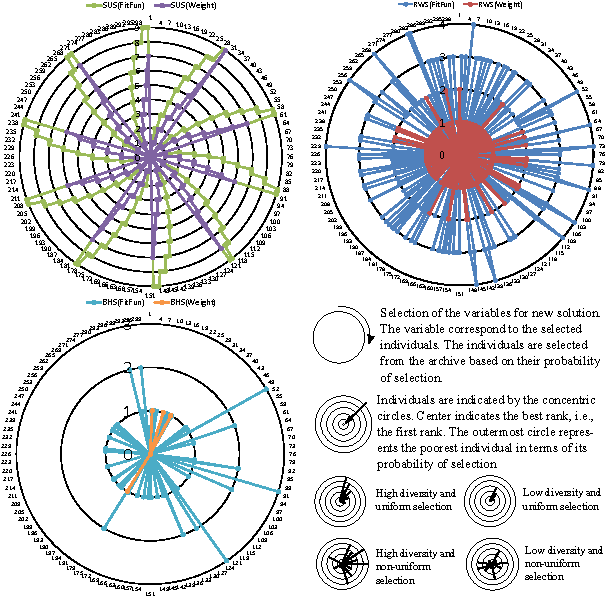
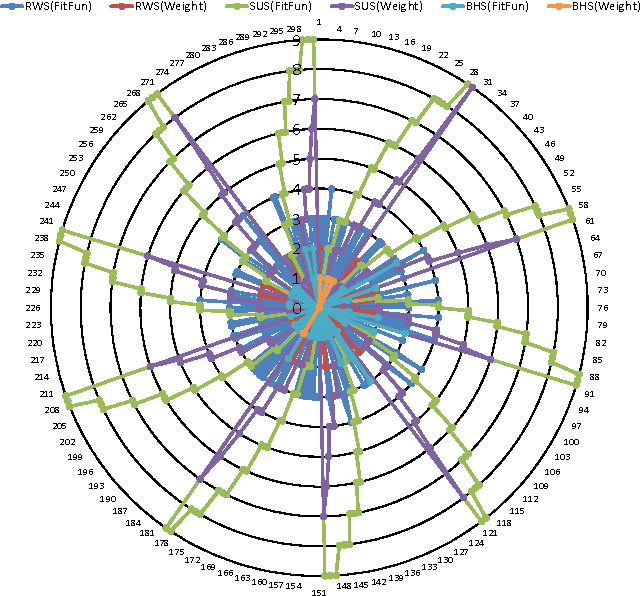
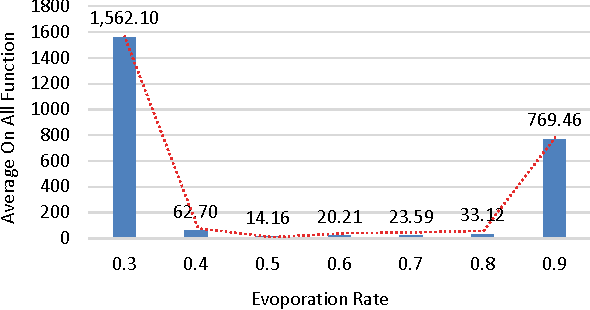
Abstract:The performance of the meta-heuristic algorithms often depends on their parameter settings. Appropriate tuning of the underlying parameters can drastically improve the performance of a meta-heuristic. The Ant Colony Optimization (ACO), a population based meta-heuristic algorithm inspired by the foraging behavior of the ants, is no different. Fundamentally, the ACO depends on the construction of new solutions, variable by variable basis using Gaussian sampling of the selected variables from an archive of solutions. A comprehensive performance analysis of the underlying parameters such as: selection strategy, distance measure metric and pheromone evaporation rate of the ACO suggests that the Roulette Wheel Selection strategy enhances the performance of the ACO due to its ability to provide non-uniformity and adequate diversity in the selection of a solution. On the other hand, the Squared Euclidean distance-measure metric offers better performance than other distance-measure metrics. It is observed from the analysis that the ACO is sensitive towards the evaporation rate. Experimental analysis between classical ACO and other meta-heuristic suggested that the performance of the well-tuned ACO surpasses its counterparts.
Simultaneous Optimization of Neural Network Weights and Active Nodes using Metaheuristics
Jul 06, 2017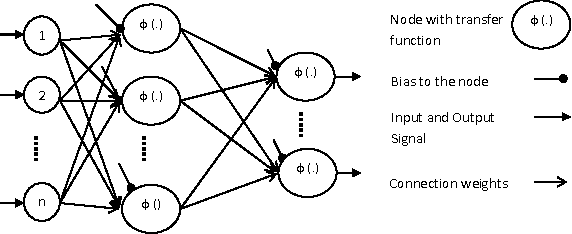
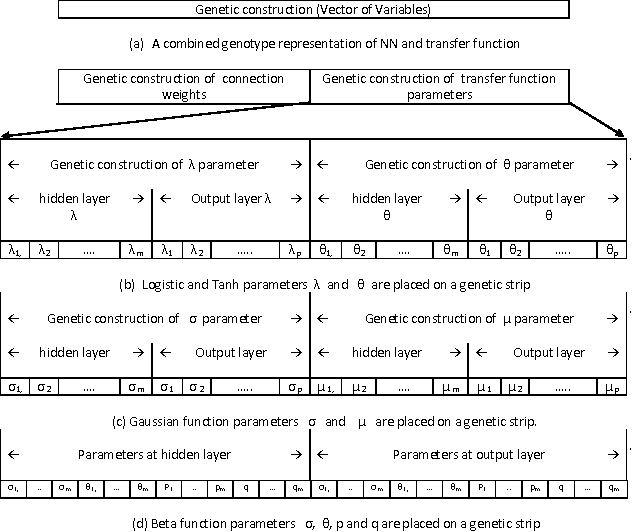


Abstract:Optimization of neural network (NN) significantly influenced by the transfer function used in its active nodes. It has been observed that the homogeneity in the activation nodes does not provide the best solution. Therefore, the customizable transfer functions whose underlying parameters are subjected to optimization were used to provide heterogeneity to NN. For the experimental purpose, a meta-heuristic framework using a combined genotype representation of connection weights and transfer function parameter was used. The performance of adaptive Logistic, Tangent-hyperbolic, Gaussian and Beta functions were analyzed. In present research work, concise comparisons between different transfer function and between the NN optimization algorithms are presented. The comprehensive analysis of the results obtained over the benchmark dataset suggests that the Artificial Bee Colony with adaptive transfer function provides the best results in terms of classification accuracy over the particle swarm optimization and differential evolution.
Multiobjective Programming for Type-2 Hierarchical Fuzzy Inference Trees
May 16, 2017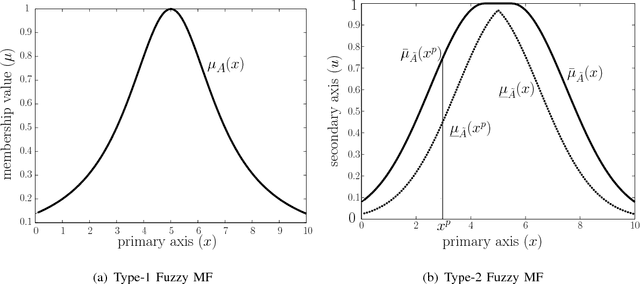


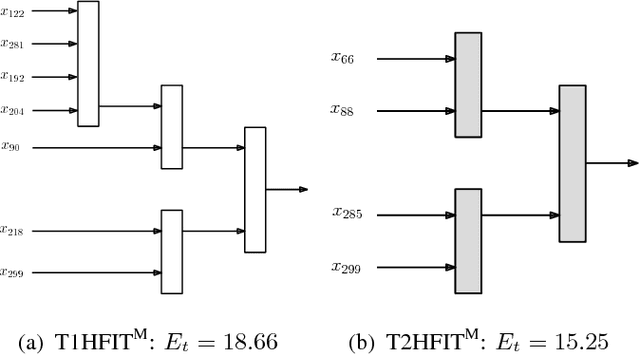
Abstract:This paper proposes a design of hierarchical fuzzy inference tree (HFIT). An HFIT produces an optimum treelike structure, i.e., a natural hierarchical structure that accommodates simplicity by combining several low-dimensional fuzzy inference systems (FISs). Such a natural hierarchical structure provides a high degree of approximation accuracy. The construction of HFIT takes place in two phases. Firstly, a nondominated sorting based multiobjective genetic programming (MOGP) is applied to obtain a simple tree structure (a low complexity model) with a high accuracy. Secondly, the differential evolution algorithm is applied to optimize the obtained tree's parameters. In the derived tree, each node acquires a different input's combination, where the evolutionary process governs the input's combination. Hence, HFIT nodes are heterogeneous in nature, which leads to a high diversity among the rules generated by the HFIT. Additionally, the HFIT provides an automatic feature selection because it uses MOGP for the tree's structural optimization that accepts inputs only relevant to the knowledge contained in data. The HFIT was studied in the context of both type-1 and type-2 FISs, and its performance was evaluated through six application problems. Moreover, the proposed multiobjective HFIT was compared both theoretically and empirically with recently proposed FISs methods from the literature, such as McIT2FIS, TSCIT2FNN, SIT2FNN, RIT2FNS-WB, eT2FIS, MRIT2NFS, IT2FNN-SVR, etc. From the obtained results, it was found that the HFIT provided less complex and highly accurate models compared to the models produced by the most of other methods. Hence, the proposed HFIT is an efficient and competitive alternative to the other FISs for function approximation and feature selection.
Identifying hazardousness of sewer pipeline gas mixture using classification methods: a comparative study
May 16, 2017



Abstract:In this work, we formulated a real-world problem related to sewer pipeline gas detection using the classification-based approaches. The primary goal of this work was to identify the hazardousness of sewer pipeline to offer safe and non-hazardous access to sewer pipeline workers so that the human fatalities, which occurs due to the toxic exposure of sewer gas components, can be avoided. The dataset acquired through laboratory tests, experiments, and various literature sources was organized to design a predictive model that was able to identify/classify hazardous and non-hazardous situation of sewer pipeline. To design such prediction model, several classification algorithms were used and their performances were evaluated and compared, both empirically and statistically, over the collected dataset. In addition, the performances of several ensemble methods were analyzed to understand the extent of improvement offered by these methods. The result of this comprehensive study showed that the instance-based learning algorithm performed better than many other algorithms such as multilayer perceptron, radial basis function network, support vector machine, reduced pruning tree. Similarly, it was observed that multi-scheme ensemble approach enhanced the performance of base predictors.
Predictive modeling of die filling of the pharmaceutical granules using the flexible neural tree
May 16, 2017



Abstract:In this work, a computational intelligence (CI) technique named flexible neural tree (FNT) was developed to predict die filling performance of pharmaceutical granules and to identify significant die filling process variables. FNT resembles feedforward neural network, which creates a tree-like structure by using genetic programming. To improve accuracy, FNT parameters were optimized by using differential evolution algorithm. The performance of the FNT-based CI model was evaluated and compared with other CI techniques: multilayer perceptron, Gaussian process regression, and reduced error pruning tree. The accuracy of the CI model was evaluated experimentally using die filling as a case study. The die filling experiments were performed using a model shoe system and three different grades of microcrystalline cellulose (MCC) powders (MCC PH 101, MCC PH 102, and MCC DG). The feed powders were roll-compacted and milled into granules. The granules were then sieved into samples of various size classes. The mass of granules deposited into the die at different shoe speeds was measured. From these experiments, a dataset consisting true density, mean diameter (d50), granule size, and shoe speed as the inputs and the deposited mass as the output was generated. Cross-validation (CV) methods such as 10FCV and 5x2FCV were applied to develop and to validate the predictive models. It was found that the FNT-based CI model (for both CV methods) performed much better than other CI models. Additionally, it was observed that process variables such as the granule size and the shoe speed had a higher impact on the predictability than that of the powder property such as d50. Furthermore, validation of model prediction with experimental data showed that the die filling behavior of coarse granules could be better predicted than that of fine granules.
Ensemble of heterogeneous flexible neural trees using multiobjective genetic programming
May 16, 2017


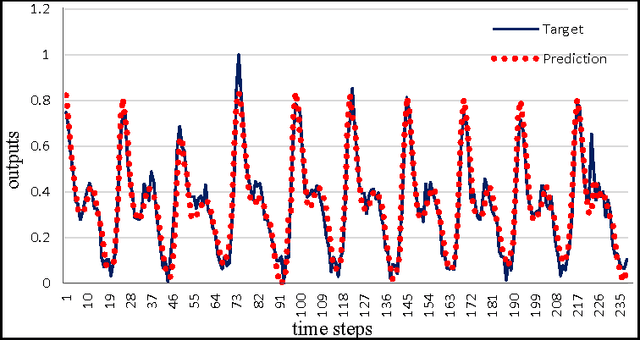
Abstract:Machine learning algorithms are inherently multiobjective in nature, where approximation error minimization and model's complexity simplification are two conflicting objectives. We proposed a multiobjective genetic programming (MOGP) for creating a heterogeneous flexible neural tree (HFNT), tree-like flexible feedforward neural network model. The functional heterogeneity in neural tree nodes was introduced to capture a better insight of data during learning because each input in a dataset possess different features. MOGP guided an initial HFNT population towards Pareto-optimal solutions, where the final population was used for making an ensemble system. A diversity index measure along with approximation error and complexity was introduced to maintain diversity among the candidates in the population. Hence, the ensemble was created by using accurate, structurally simple, and diverse candidates from MOGP final population. Differential evolution algorithm was applied to fine-tune the underlying parameters of the selected candidates. A comprehensive test over classification, regression, and time-series datasets proved the efficiency of the proposed algorithm over other available prediction methods. Moreover, the heterogeneous creation of HFNT proved to be efficient in making ensemble system from the final population.
Metaheuristic Design of Feedforward Neural Networks: A Review of Two Decades of Research
May 16, 2017



Abstract:Over the past two decades, the feedforward neural network (FNN) optimization has been a key interest among the researchers and practitioners of multiple disciplines. The FNN optimization is often viewed from the various perspectives: the optimization of weights, network architecture, activation nodes, learning parameters, learning environment, etc. Researchers adopted such different viewpoints mainly to improve the FNN's generalization ability. The gradient-descent algorithm such as backpropagation has been widely applied to optimize the FNNs. Its success is evident from the FNN's application to numerous real-world problems. However, due to the limitations of the gradient-based optimization methods, the metaheuristic algorithms including the evolutionary algorithms, swarm intelligence, etc., are still being widely explored by the researchers aiming to obtain generalized FNN for a given problem. This article attempts to summarize a broad spectrum of FNN optimization methodologies including conventional and metaheuristic approaches. This article also tries to connect various research directions emerged out of the FNN optimization practices, such as evolving neural network (NN), cooperative coevolution NN, complex-valued NN, deep learning, extreme learning machine, quantum NN, etc. Additionally, it provides interesting research challenges for future research to cope-up with the present information processing era.
Performance Analysis Of Neuro Genetic Algorithm Applied On Detecting Proportion Of Components In Manhole Gas Mixture
Aug 15, 2012



Abstract:The article presents performance analysis of a real valued neuro genetic algorithm applied for the detection of proportion of the gases found in manhole gas mixture. The neural network (NN) trained using genetic algorithm (GA) leads to concept of neuro genetic algorithm, which is used for implementing an intelligent sensory system for the detection of component gases present in manhole gas mixture Usually a manhole gas mixture contains several toxic gases like Hydrogen Sulfide, Ammonia, Methane, Carbon Dioxide, Nitrogen Oxide, and Carbon Monoxide. A semiconductor based gas sensor array used for sensing manhole gas components is an integral part of the proposed intelligent system. It consists of many sensor elements, where each sensor element is responsible for sensing particular gas component. Multiple sensors of different gases used for detecting gas mixture of multiple gases, results in cross-sensitivity. The cross-sensitivity is a major issue and the problem is viewed as pattern recognition problem. The objective of this article is to present performance analysis of the real valued neuro genetic algorithm which is applied for multiple gas detection.
 Add to Chrome
Add to Chrome Add to Firefox
Add to Firefox Add to Edge
Add to Edge